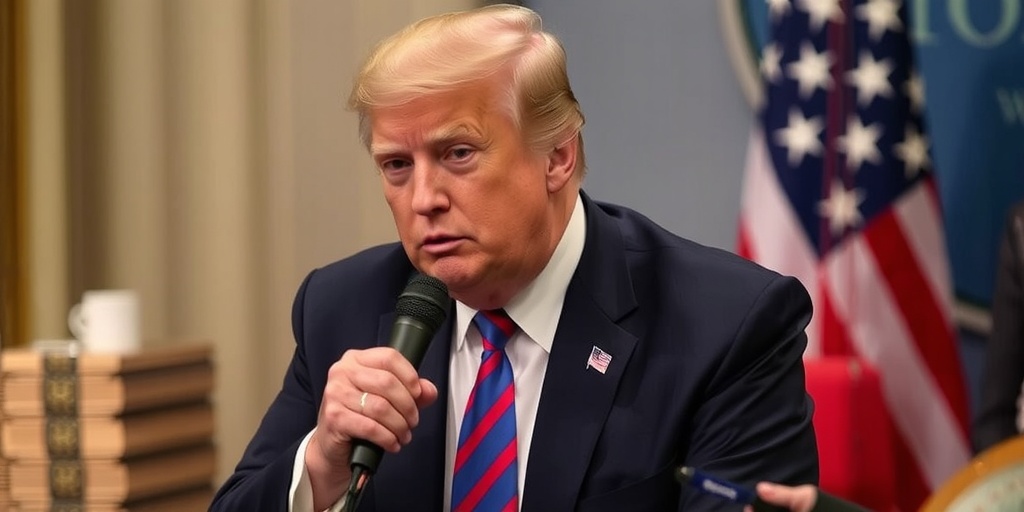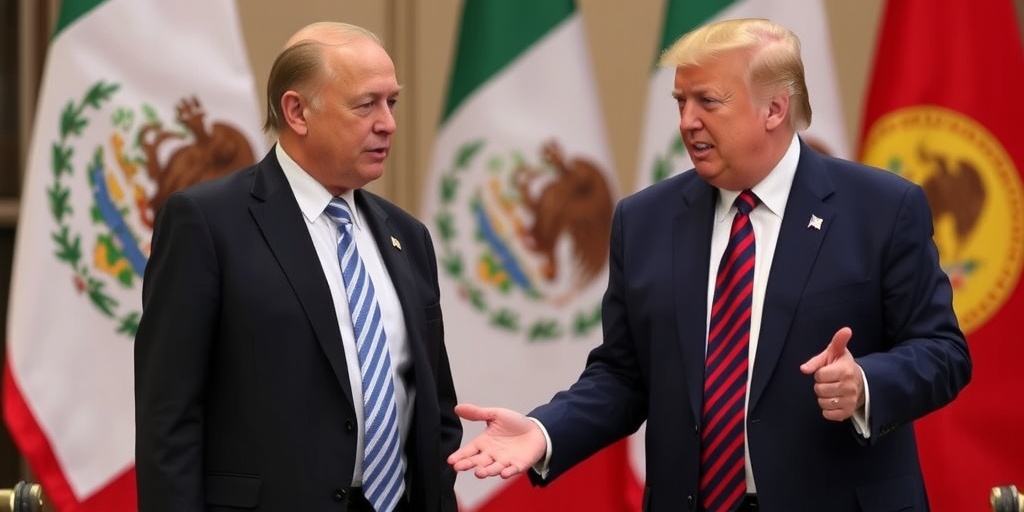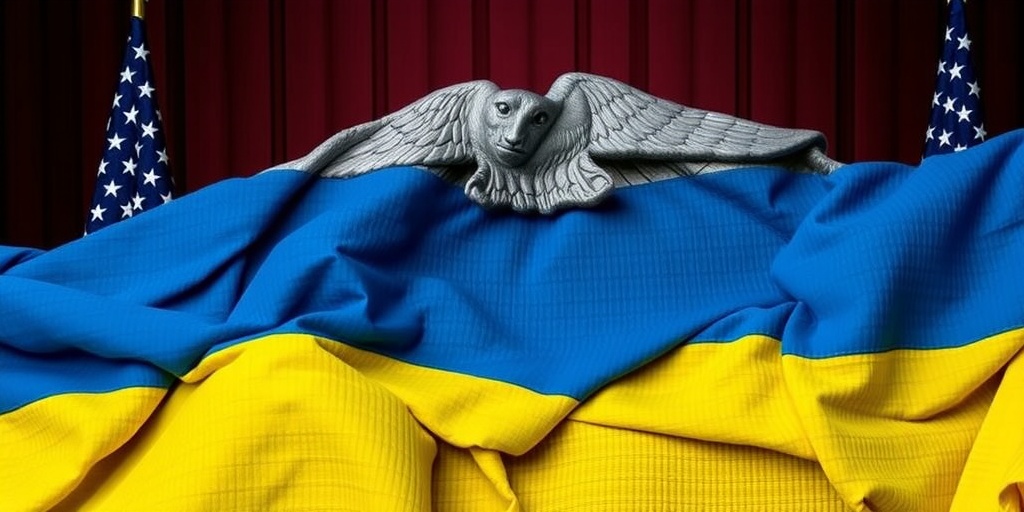Now Reading: Trump Launches Probe That May Result in Tariffs on Foreign Copper
-
01
Trump Launches Probe That May Result in Tariffs on Foreign Copper
Trump Launches Probe That May Result in Tariffs on Foreign Copper

Trump Signs Executive Order to Investigate Foreign Copper Imports Amid National Security Concerns
In a recent move highlighting increasing tensions in international trade, President Trump signed an executive order on Tuesday directing his Commerce Secretary, Howard Lutnick, to launch a thorough investigation into the implications of foreign copper production and imports for America’s economic and national security. This investigation aims to assess whether these imports pose a significant risk to U.S. interests, particularly at a time of geopolitical uncertainty.
White House officials indicated that depending on the outcome of this investigation, new tariffs could be imposed on foreign copper. This move comes as part of a broader strategy to protect the domestic copper industry, which has faced challenges in competing against what the administration describes as unfair trade practices employed by other countries. Copper is a crucial material in various sectors, including manufacturing, construction, and particularly the military and emerging technologies such as artificial intelligence and electric vehicles.
During a call with reporters on Tuesday afternoon, White House officials were tight-lipped regarding the specifics of the investigation, such as the timeline for its completion, potential tariff rates, and the anticipated start date for any new tariffs. One official notably remarked that decisions would be made in “Trump time,” implying a swift resolution.
Secretary Lutnick emphasized the importance of nurturing the American copper industry, stating, “Tariffs can help build back our American copper industry, if necessary, and strengthen our national defense. American industries depend on copper, and it should be made in America—no exemptions, no exceptions.” He added emphatically, “It’s time for copper to come home.”
However, potential tariffs on copper, similar to those planned for steel and aluminum, could lead to significant cost increases for industries reliant on copper, including automobile manufacturers, electronics firms, and construction companies. These sectors utilize copper for various applications, such as plumbing and roofing materials. The prospect of imposing tariffs has raised concerns that it might provoke backlash from domestic businesses that would see their operating costs rise.
Moreover, the introduction of tariffs could spark tensions with key copper-exporting countries. Chile stands as the largest source of copper for the United States, exporting approximately $4.63 billion worth of copper annually. Other notable suppliers include Canada, Peru, Mexico, and the Democratic Republic of the Congo. Although China is a major player in the global copper market, its exports to the U.S. have been minimal due to previously enacted tariffs.
In recent discussions, White House officials pointed to Chinese production practices as a factor contributing to the decline in global copper prices, noting that China has been aggressively acquiring copper resources worldwide. Peter Navarro, a senior trade counselor, articulated concerns about China’s approach to the global market, accusing it of utilizing "industrial overcapacity and dumping as an economic weapon to dominate global markets." He warned that the nation is now employing similar tactics to exert control over the copper market.
The administration’s focus on copper as a strategic resource aligns with broader themes in Trump’s trade policy, which has consistently emphasized the need to reevaluate U.S. relationships with trading partners. When questioned about the rationale behind targeting copper specifically, one official characterized Trump’s thought process as navigating a complex “three-dimensional chess” game, suggesting a foresight that anticipates the interconnectedness of trade dynamics and national security.
The Trump administration’s ongoing efforts at imposing tariffs extend beyond copper to a range of products, including steel, aluminum, automobiles, and pharmaceuticals. Recently, Trump hinted at imminent tariffs directed at Canada and Mexico, citing insufficient action to curb the flow of drugs and migrants into the U.S. While the tariffs were temporarily paused earlier this month, Trump reaffirmed that they would go into effect on March 4.
The copper investigation will be conducted under Section 232 of the Trade Expansion Act, which empowers the president to impose tariffs on foreign products based on national security considerations. Legally, the Secretary of Commerce is required to submit findings from the investigation to the president within a 270-day timeframe.
Analysts have noted a rise in copper prices this year in anticipation of potential tariffs, alongside continued strength in manufacturing activity. According to reports, the United States consumed approximately $17 billion worth of copper in 2024, with about 45% of that amount being imported.
As the investigation unfolds and potential tariffs are considered, the broader implications of this trade policy on both domestic industries and international relations remain to be seen. This decisive move reflects the administration’s continued emphasis on protecting American industries while navigating the complexities of a global trading environment.
Stay Informed With the Latest & Most Important News
Previous Post
Next Post
Previous Post
Next Post
-
 01New technology breakthrough has everyone talking right now
01New technology breakthrough has everyone talking right now -
 02Unbelievable life hack everyone needs to try today
02Unbelievable life hack everyone needs to try today -
 03Fascinating discovery found buried deep beneath the ocean
03Fascinating discovery found buried deep beneath the ocean -
 04Man invents genius device that solves everyday problems
04Man invents genius device that solves everyday problems -
 05Shocking discovery that changes what we know forever
05Shocking discovery that changes what we know forever -
 06Internet goes wild over celebrity’s unexpected fashion choice
06Internet goes wild over celebrity’s unexpected fashion choice -
 07Rare animal sighting stuns scientists and wildlife lovers
07Rare animal sighting stuns scientists and wildlife lovers





















